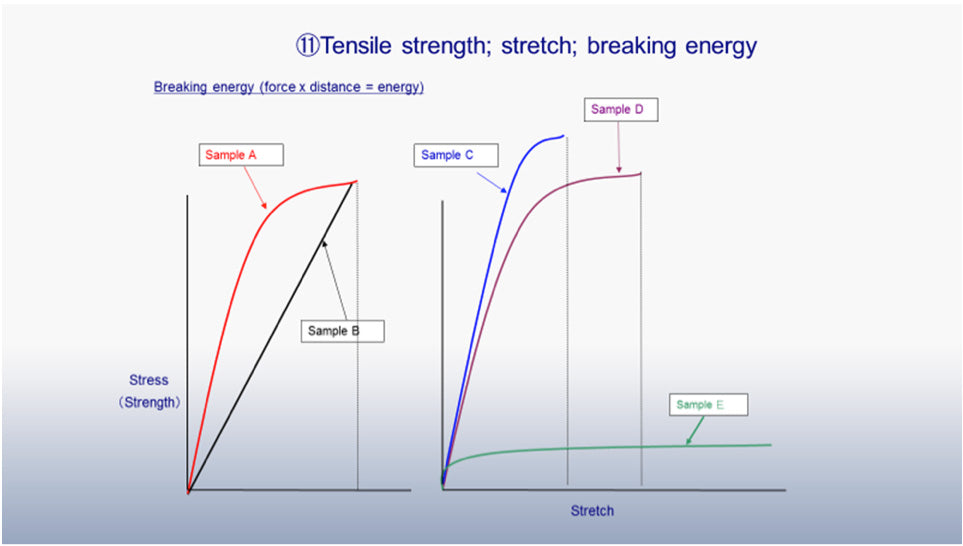The Best Knot for Fluorocarbon

You can buy the most expensive line available, but without tying the proper knot, that critical connection to the fish can easily be broken, no matter how expensive the line is. The advancement of new materials being used for fishing lines has also created a need for anglers to use different knots for each of the different types of lines.
Sunline's Dedicated Team
Sunline has 10% of its employees located in the R&D department, and those staff members spend every day testing lines and line performance, including knots. The Sunline R&D team has conducted an extensive survey of which knots are the most effective with each type of line, and that information is now available to ensure anglers get the best performance possible from the specific type of line they are using. Sunline tests the strength of each line with different knots in lab conditions with repeated tests to develop comprehensive data about each knot. The testing machine measures the knot and breaking strength. See a picture of it below.

The Importance of Tying the Right Knot
You may choose to keep it simple and use one knot to tie lures to your nylon, fluorocarbon, or braid. If the knot is tied properly, that can be done, but there are also specific knots that work the best with each type of line. Learning and utilizing these knots will allow you to truly maximize the performance of your lines.
Many professional anglers have learned the hard way that the knots they tied for years may not work as well with the new lines available today. Fluorocarbon, in particular, can easily break on the hookset if the proper knot is not used. Many anglers, including professional anglers, have blamed a broken line on the hookset with fluorocarbon to be a “bad batch” when it was the knot they were tying.
Why is fluorocarbon more impacted by a poor knot and a strong hookset? The answer to that lies in the nature of the carbon raw material itself. Anglers choose fluorocarbon for its improved sensitivity. That improved sensitivity comes from the fact that fluorocarbon is a harder material than the nylon lines used for years. That hardness allows it to better transfer feeling to the rod. Much like how anglers now choose tungsten weights instead of lead weights for improved sensitivity. The improved sensitivity comes from the tungsten being a harder material and better transferring the bites or bottom contact up the line to an angler. That same hardness can also cause fluorocarbon to quickly cut itself faster than a nylon line.
With that being said, when would an angler want to choose a nylon line instead of a fluorocarbon line? To answer that question, we wrote an article that explains the difference between monofilament (nylon), fluorocarbon, and braided lines. Suppose an angler ties a knot with fluorocarbon where the fluorocarbon crosses itself. In that case, that crossing can cause the line to break very easily at that spot as the fluorocarbon cuts itself.
With the line crossed, many anglers, including professionals, experienced breakoffs with the Palomar knot when they first began using it on a regular basis. When tied properly, the Palomar can be an effective knot for fluorocarbon because it doesn’t sinch down on the line as much and ruin the abrasion resistance, but there are also other choices that will give you greater performance. Also, one tip to do no matter what knot you are tying is to moisten the knot before you sinch it down.
Best Knot For Fluorocarbon
So, what is the best knot for fluorocarbon? Sunline recommends using the Tornado HH Knot. We recommend this knot for fluorocarbon because the knot strength of the Tornado HH knot is nearly 100% of straight strength. Meaning the knot has the same tensile strength as the line. Knots break under strain because the breaking strength of the knot is lower than the line, and it breaks at the weakest point. By tying the best knot possible, you are making sure that you get the maximum performance from your line during that lb test. The graph below shows how tensile strength, stretch, and breaking energy are all measured.

The lab results below show the testing data of the Tornado HH that demonstrate the high tensile strength.

The lab testing data confirms that in a controlled environment the Tornado HH Knot is the best choice for fluorocarbon lines. The graphic below shows step by step how to tie the Tornado HH Knot.

You can also watch the video version here.
Keep practicing
Data in the lab does not always match what anglers experience on the water, and if you have success with a knot, keep using it. You can watch videos of all the different knots we recommend at Sunline here. One thing to mention is that the graphics on the videos and pictures like the one above show the tag end being cut flush with the knot after it is tied. Do NOT do this! We strongly recommend leaving enough tag end after tying the knot in case the knot slips at all on a hookset. The fish will not see the tag end when there are 50 more feet of line out. Typically, about 1/2 to 3/4 inch is a good length for the tag end so that it won’t touch your lure.
Always make sure to keep practicing tying your knot until you perfect it. The last thing an angler wants is their knot to fail because it was not tied correctly.

